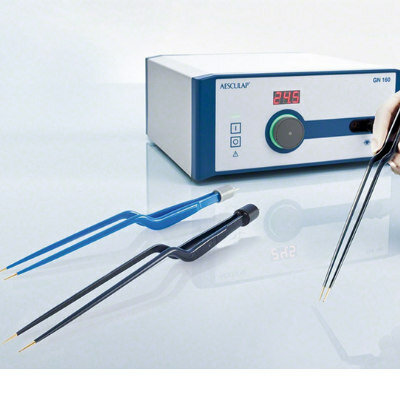Medical Robots Market to Reach USD 28 Billion in 2025
|
By HospiMedica International staff writers Posted on 02 Oct 2018 |
The global medical robots market is estimated to grow with a CAGR of 22.3% from USD 5.74 billion in 2017 to USD 28.78 billion in 2025, driven by increasing training programs for robotic surgeries and a rise in the usage of robots across various healthcare fields such as surgeries, therapies, rehabilitation, pharmacy dispensing, sanitation and others. These are the latest findings of Research and Markets, (Dublin, Ireland), a global market research company.
Medical robots offer advantages that benefit people in various ways that help them to enhance their workflow and work efficiency. However, the high cost of surgical procedures and installation is hindering the growth of the medical robots market. Nevertheless, trends such as the development of microbots and therapeutic robots are likely to drive the growth of the medical robots market in the coming future.
On the basis of products, the surgical robots segment held the largest share of 46.3% in the medical robots market and is expected to maintain its dominant position during the forecast period from 2018 to 2025. However, the rehabilitation robots segment is growing at the fastest pace. Based on application, the laparoscopy segment held the largest share of 56.2% of the medical robots market, by technology, in 2017 and is expected to maintain its dominant position during the forecast period due to its advantages such as adoption in emergence of data supporting efficacy and safety.
Related Links:
Research and Markets
Medical robots offer advantages that benefit people in various ways that help them to enhance their workflow and work efficiency. However, the high cost of surgical procedures and installation is hindering the growth of the medical robots market. Nevertheless, trends such as the development of microbots and therapeutic robots are likely to drive the growth of the medical robots market in the coming future.
On the basis of products, the surgical robots segment held the largest share of 46.3% in the medical robots market and is expected to maintain its dominant position during the forecast period from 2018 to 2025. However, the rehabilitation robots segment is growing at the fastest pace. Based on application, the laparoscopy segment held the largest share of 56.2% of the medical robots market, by technology, in 2017 and is expected to maintain its dominant position during the forecast period due to its advantages such as adoption in emergence of data supporting efficacy and safety.
Related Links:
Research and Markets
Latest Business News
- Philips and Masimo Partner to Advance Patient Monitoring Measurement Technologies
- B. Braun Acquires Digital Microsurgery Company True Digital Surgery
- CMEF 2025 to Promote Holistic and High-Quality Development of Medical and Health Industry
- Bayer and Broad Institute Extend Research Collaboration to Develop New Cardiovascular Therapies
- Medtronic Partners with Corsano to Expand Acute Care & Monitoring Portfolio in Europe
- Expanded Collaboration to Transform OR Technology Through AI and Automation
- Becton Dickinson to Spin Out Biosciences and Diagnostic Solutions Business
- Boston Scientific Acquires Medical Device Company SoniVie
- 2026 World Hospital Congress to be Held in Seoul
- Teleflex to Acquire BIOTRONIK’s Vascular Intervention Business
- Philips and Mass General Brigham Collaborate on Improving Patient Care with Live AI-Powered Insights
- Arab Health 2025 Celebrates Landmark 50th Edition
- Boston Scientific Acquires Medical Device Company Intera Oncology
- MEDICA 2024 to Highlight Hot Topics of MedTech Industry
- Start-Ups To Once Again Play Starring Role at MEDICA 2024
- Boston Scientific to Acquire AFib Ablation Company Cortex
Channels
Critical Care
view channel
Light-Based Technology to Measure Brain Blood Flow Could Diagnose Stroke and TBI
Monitoring blood flow in the brain is crucial for diagnosing and treating neurological conditions such as stroke, traumatic brain injury (TBI), and vascular dementia. However, current imaging methods like... Read more
AI Heart Attack Risk Assessment Tool Outperforms Existing Methods
For decades, doctors have relied on standardized scoring systems to assess patients with the most common type of heart attack—non-ST-elevation acute coronary syndrome (NSTE-ACS). The GRACE score, used... Read moreSurgical Techniques
view channel
Robotic Assistant Delivers Ultra-Precision Injections with Rapid Setup Times
Age-related macular degeneration (AMD) is a leading cause of blindness worldwide, affecting nearly 200 million people, a figure expected to rise to 280 million by 2040. Current treatment involves doctors... Read more
Minimally Invasive Endoscopic Surgery Improves Severe Stroke Outcomes
Intracerebral hemorrhage, a type of stroke caused by bleeding deep within the brain, remains one of the most challenging neurological emergencies to treat. Accounting for about 15% of all strokes, it carries... Read morePatient Care
view channel
Revolutionary Automatic IV-Line Flushing Device to Enhance Infusion Care
More than 80% of in-hospital patients receive intravenous (IV) therapy. Every dose of IV medicine delivered in a small volume (<250 mL) infusion bag should be followed by subsequent flushing to ensure... Read more
VR Training Tool Combats Contamination of Portable Medical Equipment
Healthcare-associated infections (HAIs) impact one in every 31 patients, cause nearly 100,000 deaths each year, and cost USD 28.4 billion in direct medical expenses. Notably, up to 75% of these infections... Read more
Portable Biosensor Platform to Reduce Hospital-Acquired Infections
Approximately 4 million patients in the European Union acquire healthcare-associated infections (HAIs) or nosocomial infections each year, with around 37,000 deaths directly resulting from these infections,... Read moreFirst-Of-Its-Kind Portable Germicidal Light Technology Disinfects High-Touch Clinical Surfaces in Seconds
Reducing healthcare-acquired infections (HAIs) remains a pressing issue within global healthcare systems. In the United States alone, 1.7 million patients contract HAIs annually, leading to approximately... Read moreHealth IT
view channel
















